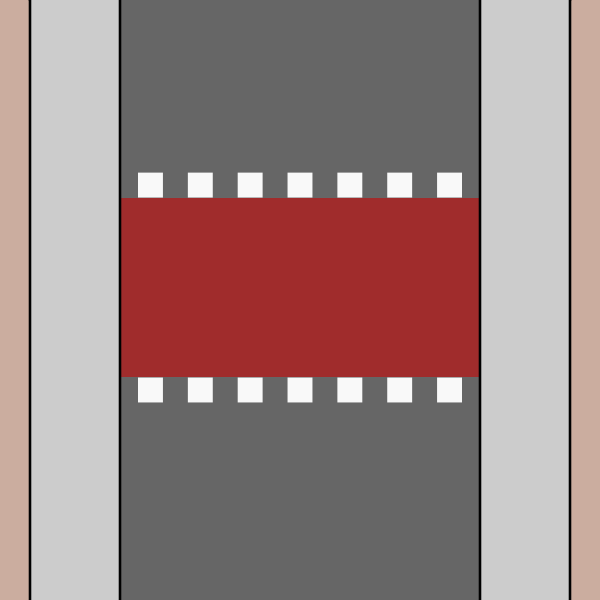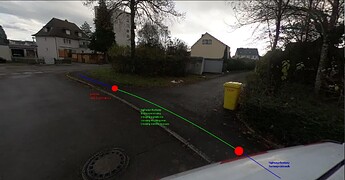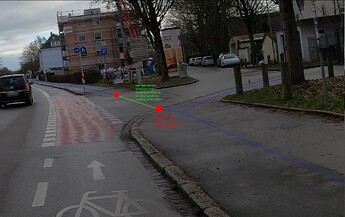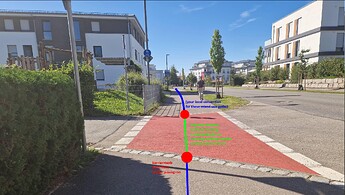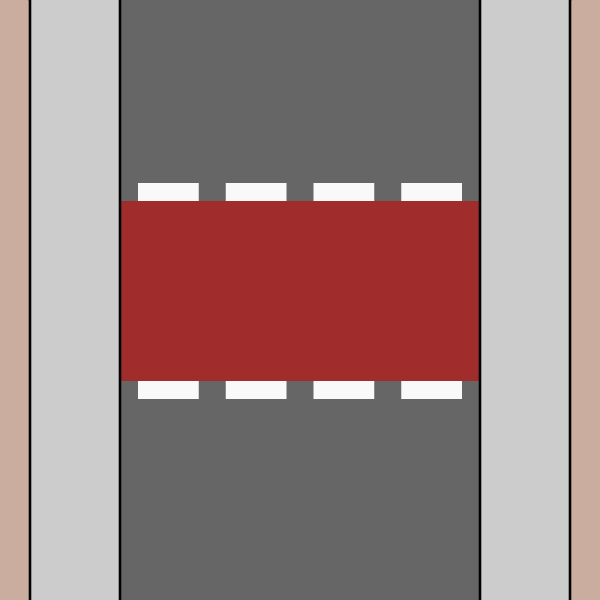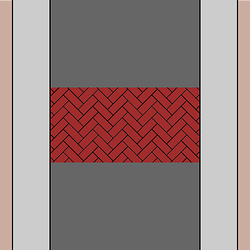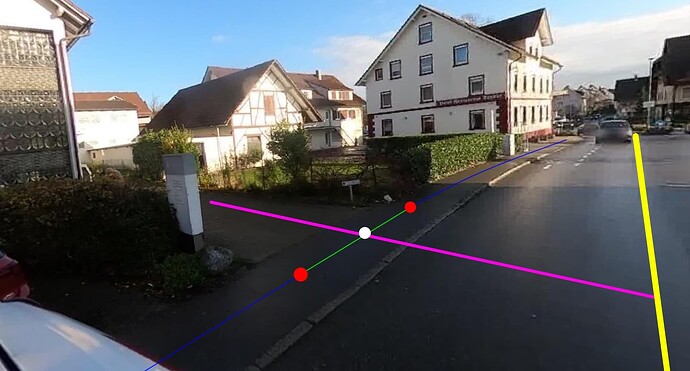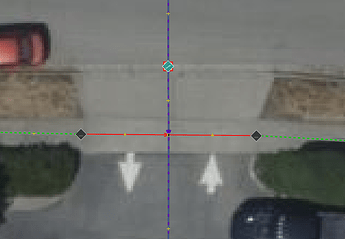What crosses what?
We are very familiar with, footway and cycleway crossing a road, use. We use highway=crossing on the node.
But is there also an opposite, where a road section crosses else, the footway, cycleway? That opposite thinking. We are already articulating this view in communications, as, driveway crosses a cycle path. Is that the case when accessing a yard. Is there a tag for that? highway=xxx_crossing Should there be a clear distinction. I see that mappers use, highway=crossing, actually use improperly.
driveway:
Where does a driveway start?
Legally.
The road, what belongs to the road?
The verge, as well as footpath and cycle tracks lying in the verge, as well as the branch to the entrance to the yard. (landuse=highway)
This branch is (mostly) maintained by the government, there are those places, that the use of this branch has a function other than reaching the yard, a through function, crossing function, for users of the footpath and or cycle path. The government is deliberately make use of this to construct the network for these users in this way. On two sides is a footpath (sidewalk) these branches (to yard) are used to get from one side to the other, so it does not only play at junctions. It can be reasoned that you say, I am not using a driveway at that time, so that branch should not get service=driveway. If that is the case then it may adversely affect navigation calculation, if one decides not to use service=driveway in navigation calculation. An OSM cut will then be desirable and give that part only `highway=service’ with ?.
The branch is not legally owned by the yard owner. A reason not to navigate over driveway.
I have seen that OSM mappers, also gave this branch highway=unclassified residential, which makes you think. Why they do that, is it some logical feeling.
The driveway starts on the property land.
The branch, it is more of a service=driveway_link.
Although, everybody, me included, call it the driveway in general.
But OSM is describing the parts, including the driveway (general) and the different elements.
As a OSM mapper I see different functions.
Thus, I understand the approach of other mappers, who did things differently before.
And I can pretty much go along with that. But how, is it better tagged?
``crossing:continuous=yes|no` ```
Term,crossing, has a clear connection to one, the general foot and cycle crossings, we are now talking about the other, for which we should then not use the term crossing, but xxx_crossing or something similar. That the distinction is more understandable.









